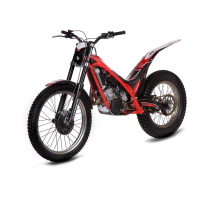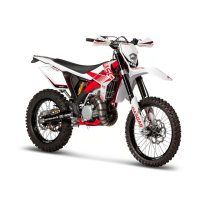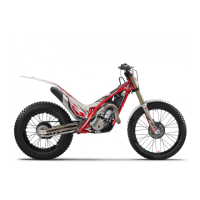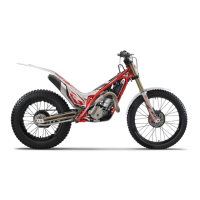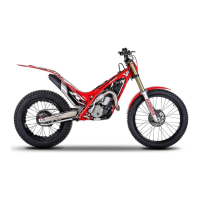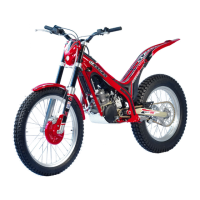
Do you have a question about the GAS GAS TXT PRO - 2006 and is the answer not in the manual?
| Brand | GAS GAS |
|---|---|
| Model | TXT PRO - 2006 |
| Category | Motorcycle |
| Language | English |
Defines the start and end dates of the warranty coverage.
Outlines conditions under which GG may reject warranty claims.
Lists parts and conditions explicitly not covered by the warranty.
Details GG's discretion in repairs, expert inspections, and contract cancellation rights.
Provides details on engine size, bore, stroke, lubrication, and ignition.
Details transmission type, clutch, drive system, and gear ratios.
Lists frame material, tyre specifications, and suspension details.
Specifies brake type and disc diameter.
Lists overall height, length, width, seat height, ground clearance, wheelbase, and fuel capacity.
Details how to find the serial number and homologation plate.
Explains where to find the key identification number for ordering spares.
Explains the location and function of the indicator control.
Describes the placement and operation of light controls.
Explains the correct position of the fuel tap for normal operation and reserve.
Details how to adjust the idle and petrol-air mixture.
Specifies the correct position and play for brake and clutch levers.
Shows the correct position for the kick-start when not in use.
Specifies the engine oil capacity and type.
Describes the location of the engine crankcase drain cap for oil emptying.
Step-by-step guide for removing the fuel tank for servicing.
Advises on using correct coolant and safety when working with hot engine.
Step-by-step instructions for removing the filter box.
Details how to clean the carburettor body.
Explains how to check the carburettor float level.
Details thorough cleaning of the carburettor and main nozzle.
Instructions for inspecting the reed box assembly and its components.
Advises on protecting the cylinder bore during reed box handling.
Specifies the correct measurement for clutch stack height.
How to check clutch discs for wear and minimum measurement.
Procedure for purging air from the clutch lifter circuit.
Identifies the location of the water pump drainage.
Details oil level and capacity for 125/200cc front forks.
Details oil level and capacity for 250/280/300cc front forks.
Explains manual adjustment of front suspension extension and compression.
How to adjust the shock absorber spring length.
How to adjust shock absorber compression.
Emphasizes periodic removal and verification of swingarm bearings.
Details cleaning, verification, and lubrication of rear suspension linkages.
Lubrication points for brake/clutch levers, gear shift, rear brake pedal, footrests.
Lubrication for engine starting lever linkage and secondary chain.
Lubricating the handlebar and throttle control for smooth operation.
Recommends frequent lubrication of the chain tensor spring.
Advises on cleaning and lubricating the gas control, especially after washing.
How to regulate chain slack and center the rear wheel using shaft excentrics.
Specifies the correct chain tension and slack.
Emphasizes checking tyre condition for optimal road adherence.
Advises periodic checking of tyre pressure for best road adherence.
Recommends checking brake pad wear for efficient braking power.
How to verify the front brake fluid level through the inspection window.
Mentions bleeder valves in brake calipers for air elimination.
Steps to follow for extended storage of the motorcycle.
Procedures for preparing the motorcycle after a period of storage.
Advises on careful washing to preserve plastics and labels.
Details the components and display of the multifunction control panel.
Explains the meaning of various indicator symbols on the panel.
How to navigate between different screens using the MODE button.
How to reset data stored in the multifunction display.
Procedure to set up the gear change indicator according to RPM.
Explains bar, digital, max RPM, speed, max speed, and average speed displays.
Details TRIP, ODO, RT, and TT functions for mileage and time tracking.
Describes the 12/24 hour clock and the fuel level indicator display.
Lists operations like clock, gear change indicator, and wheel circumference setup.
Steps to configure the 12/24 hour clock and system symbols.
How to adjust the gear change indicator setting according to RPM.
Adjusting the number of engine revolutions per signal.
Setting the wheel circumference for accurate speed measurement.
Emphasizes pre-ride checks and periodic inspections by authorized dealers.
Recommends wearing safety equipment and using common sense while riding.
Manufacturer's right to modify specifications and liability limitations.
Lists required elements for public road travel and inspection approval.
Mentions a complementary kit for a non-homologated racing version.


